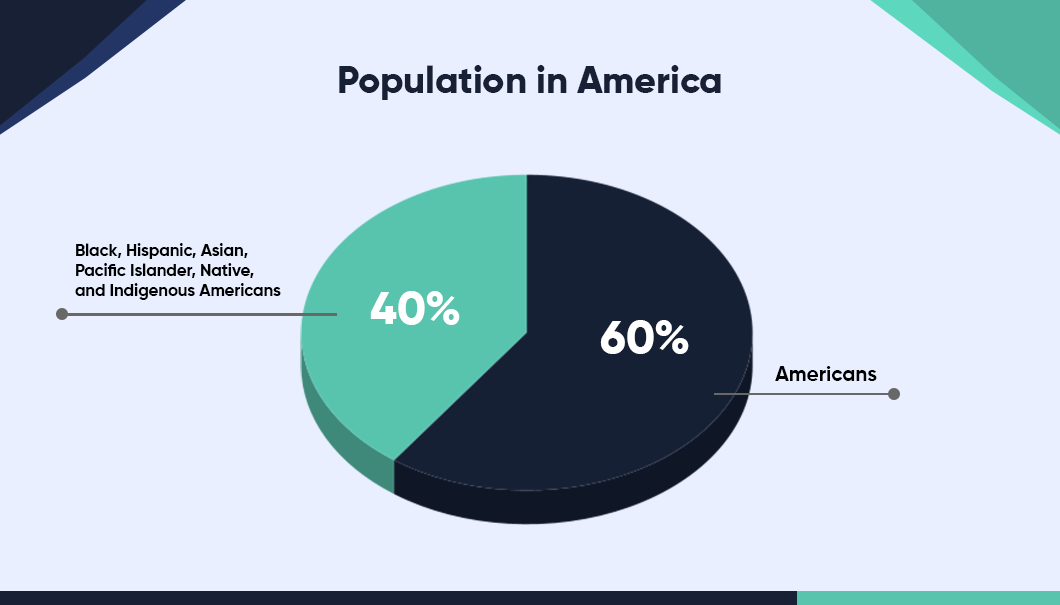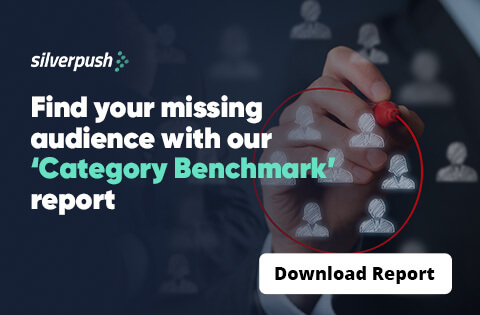The Power of Multicultural Advertising: Reaching Diverse Audiences | 24 May, 2023

USA minority groups buying power is expected to rise from 4.2 trillion in 2020 to 7 trillion by 2025. With this significant growth, brands cannot afford to overlook the importance of targeting multicultural communities in their advertising strategies.
In this blog, we will explore why brands should focus on diversity, how they can effectively reach multicultural communities, and the benefits of doing so.
Why is Multicultural Advertising Important?
Brands aspire to capture the hearts of millions and establish a lasting brand recall as their primary objective. Yet they miss out on a larger portion of the audience.
Multiculturalism has played a significant role in this endeavor, showcasing its positive impact on our daily lives. This can be observed through the fusion of diverse cultures in ethnic enclaves found in metropolitan areas and the availability of various ethnic cuisines in supermarkets. One of the driving forces behind the market expansion in the past decade has been the multicultural consumer market, currently valued at over $5 trillion.
The corporate expansion serves as a pivotal factor in this growth, benefiting all brands. As markets expand, more consumers enter the fray, leading to increased consumption and fostering innovation by introducing new products. This, in turn, promotes higher usage and the potential for premium pricing. When executed effectively, this generates greater revenue and income, consequently enhancing purchasing power.
A renowned brand from the FMCG industry had a boost in sales in North America. Interestingly, a larger portion of their sales was accounted for by diverse communities of the region.

What is Multicultural Advertising?
Immigration encompasses more than mere physical mobility; it represents the dynamic exchange and interplay of diverse cultures. Each individual carries the bedrock of their identity, fostering the emergence of vibrant and multicultural communities.
Expanding Horizons: Beyond the LGBTQ+ Community
While many advertisers focus solely on the LGBTQ+ community when it comes to multicultural advertising, it’s essential to remember that diversity encompasses various ethnic groups. In the United States, Black, Hispanic, Asian, Pacific Islander, Native, and Indigenous Americans makeup 40% of the population. It is crucial for brands to recognize and target the entire multicultural communities to maximize their reach and impact.
How can Brands Reach Multicultural Communities?
The advertising arena is under evolution. The phase-out of third-party cookies has inclined advertisers towards contextual advertising. Since cross-culture targeting poses a set of challenges that are hard to overcome with conventional targeting methods, contextual targeting methods can be beneficial.
Some of the challenges are:
1. Cultural Sensitivity: Multicultural communities are sensitive towards their presence. Brands must understand their diverse cultural nuances and sensitivities. They must ensure that their message resonates with the viewer.
2. Language Barrier: Brands need to ensure that their message is tailored well according to the specific group they are targeting. Understanding the intricacies of each culture is crucial for creating effective campaigns that resonate with the target audience.
3. Limited Reach and Targeting: Traditional advertising channels often need to be improved when it comes to reaching specific multicultural audiences. Targeting these communities through one or more channels can be complex as they may cause hindrances in targeting methods.
To overcome these challenges, advertisers can leverage Silverpush’s advanced AI technology, Mirrors. This offers enhanced brand safety and suitability, allowing advertisers to reach their desired audience contextually and through different platforms.
YouTube
To begin with, the best way to reach the audience is through video advertising. Did you know, 82% of the global content consumption is from videos. With contextual video advertising, brands can easily tap into the audience as the AI offers the first context detection based on the identification of key context like brands name from metadata for granular targeting.
Open Web
Conventional targeting created voids that further created challenges for brands to reach their desired audience. But by analyzing the page’s content in real-time and combining relevant information, it provides personalized advertising, filling the gaps.
Meta
Sentiment analysis and NLP tools search countless Facebook pages to find the most contextually appropriate video material. Mirrors target high-performing sites by correlating context relevance with engagement metrics (likes, shares, comments, and subscriptions).
Brands can effectively reach their audience while respecting their privacy by utilizing contextual advertising, which capitalizes on the reader’s existing interests and aligns ads with the content they consume. This contrasts with behavioral targeting methods that can leave users feeling monitored and followed.
Conclusion
According to a survey, 64% of consumers agreed that they engaged with a brand after seeing an ad that they considered diverse or inclusive.
Multicultural communities have long-awaited recognition and representation, and they can be found across the globe. One prominent example is the city of New York in the United States. Known as a melting pot of various cultures, people from all over the world call New York home. Its remarkable diversity is one of its greatest strengths and contributes to its status as a leader in creativity and innovation. Similarly, Toronto in Canada and London in Europe are home to diverse communities.
When it comes to advertising, it is crucial to recognize that multicultural communities should not be targeted as a one-time or occasional effort. Instead, brands should strive to engage with these communities consistently throughout the year. These diverse communities represent the future audience, and establishing a meaningful connection with them is essential to staying ahead of the curve in an increasingly diverse world.
By understanding and embracing the multicultural nature of society, brands can tap into new markets, foster inclusivity, and build lasting relationships with diverse audiences.

BLOGS
Partner Spotlight: Alice Ovadia, VP of Media Strategy
Silverpush is excited to highlight TRUth for our Partner Spotlight this week. We caught up with Alice Ovadia, VP of Media Strategy at TRUth, to learn more about the agency and talked to her about her big predictions for the ad market in the coming years. Here’s what Alice said. 1. ...

BLOGS
Why Granular Insights Are Critical for Ad Campaign Optimization
When your ad campaign ends and the dashboard lights up with a “great” VTR or a CTR that’s above average, you celebrate, right? But then comes the pause. What actually made it work? Was it the creative? The audience? The time of day? The context of the video? Most platforms ...

BLOGS
YouTube CTV Advertising: Bigger Screens, Bigger Impact
YouTube has always been a powerhouse for brands looking to connect with audiences. With over 2 billion monthly active users, it’s a platform that reaches people everywhere, on their phones, tablets, and laptops. However, the way people watch YouTube today is very different from how it used to be in the ...







